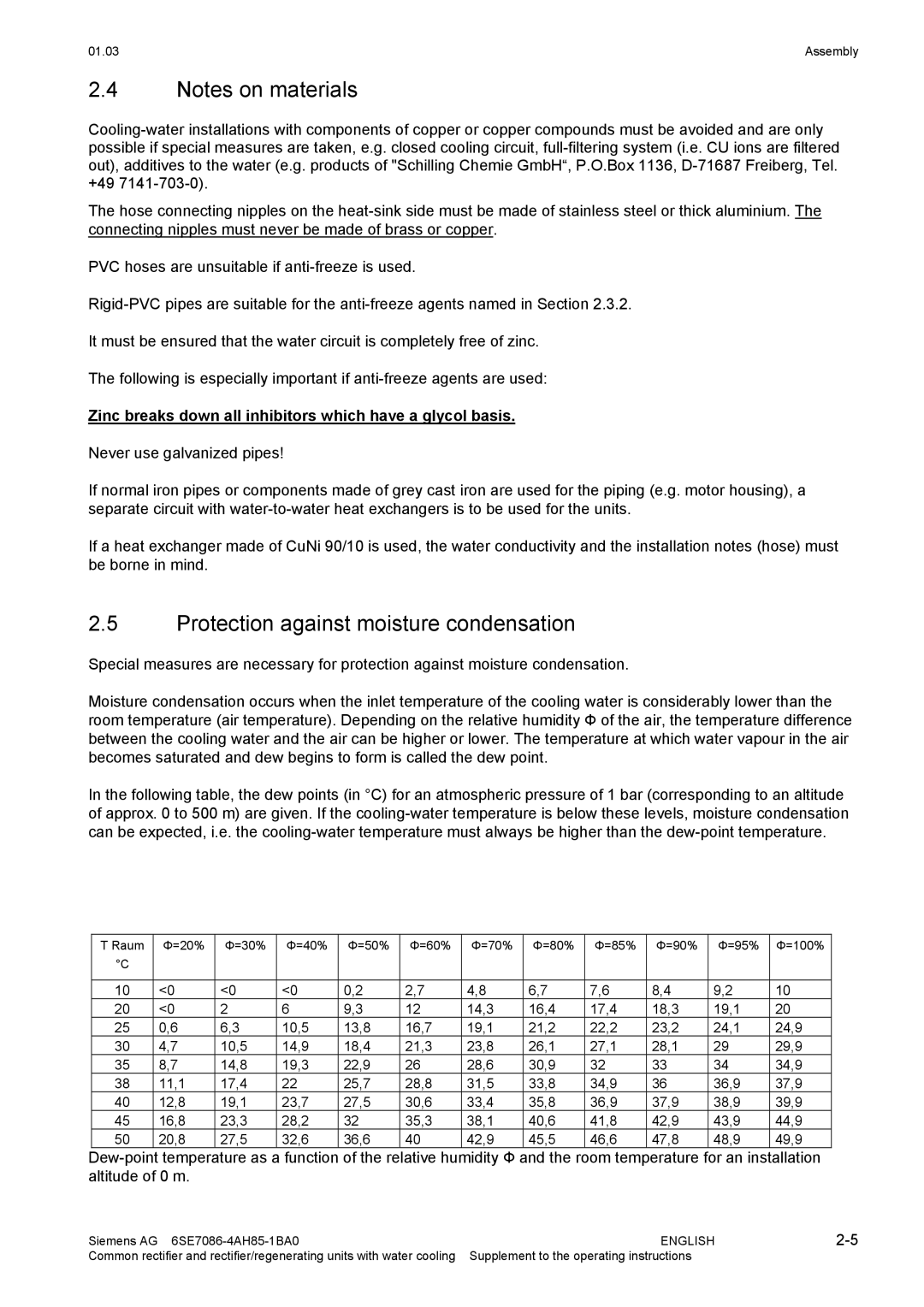01.03 | Assembly |
2.4Notes on materials
The hose connecting nipples on the
PVC hoses are unsuitable if
It must be ensured that the water circuit is completely free of zinc.
The following is especially important if
Zinc breaks down all inhibitors which have a glycol basis.
Never use galvanized pipes!
If normal iron pipes or components made of grey cast iron are used for the piping (e.g. motor housing), a separate circuit with
If a heat exchanger made of CuNi 90/10 is used, the water conductivity and the installation notes (hose) must be borne in mind.
2.5Protection against moisture condensation
Special measures are necessary for protection against moisture condensation.
Moisture condensation occurs when the inlet temperature of the cooling water is considerably lower than the room temperature (air temperature). Depending on the relative humidity Ф of the air, the temperature difference between the cooling water and the air can be higher or lower. The temperature at which water vapour in the air becomes saturated and dew begins to form is called the dew point.
In the following table, the dew points (in °C) for an atmospheric pressure of 1 bar (corresponding to an altitude of approx. 0 to 500 m) are given. If the
T Raum | Ф=20% | Ф=30% | Ф=40% | Ф=50% | Ф=60% | Ф=70% | Ф=80% | Ф=85% | Ф=90% | Ф=95% | Ф=100% |
°C |
|
|
|
|
|
|
|
|
|
|
|
|
|
|
|
|
|
|
|
|
|
|
|
10 | <0 | <0 | <0 | 0,2 | 2,7 | 4,8 | 6,7 | 7,6 | 8,4 | 9,2 | 10 |
20 | <0 | 2 | 6 | 9,3 | 12 | 14,3 | 16,4 | 17,4 | 18,3 | 19,1 | 20 |
25 | 0,6 | 6,3 | 10,5 | 13,8 | 16,7 | 19,1 | 21,2 | 22,2 | 23,2 | 24,1 | 24,9 |
30 | 4,7 | 10,5 | 14,9 | 18,4 | 21,3 | 23,8 | 26,1 | 27,1 | 28,1 | 29 | 29,9 |
35 | 8,7 | 14,8 | 19,3 | 22,9 | 26 | 28,6 | 30,9 | 32 | 33 | 34 | 34,9 |
38 | 11,1 | 17,4 | 22 | 25,7 | 28,8 | 31,5 | 33,8 | 34,9 | 36 | 36,9 | 37,9 |
40 | 12,8 | 19,1 | 23,7 | 27,5 | 30,6 | 33,4 | 35,8 | 36,9 | 37,9 | 38,9 | 39,9 |
45 | 16,8 | 23,3 | 28,2 | 32 | 35,3 | 38,1 | 40,6 | 41,8 | 42,9 | 43,9 | 44,9 |
50 | 20,8 | 27,5 | 32,6 | 36,6 | 40 | 42,9 | 45,5 | 46,6 | 47,8 | 48,9 | 49,9 |
Siemens AG | ENGLISH | |
Common rectifier and rectifier/regenerating units with water cooling | Supplement to the operating instructions |
|
